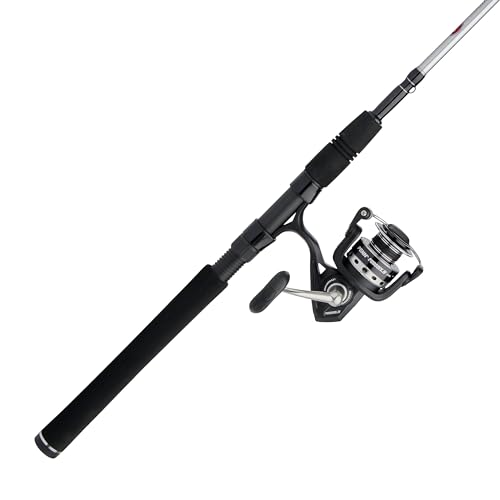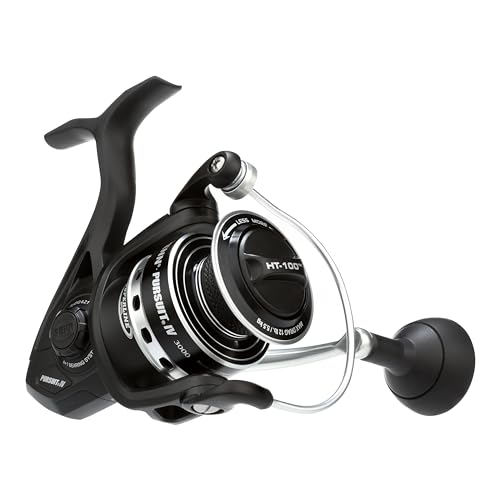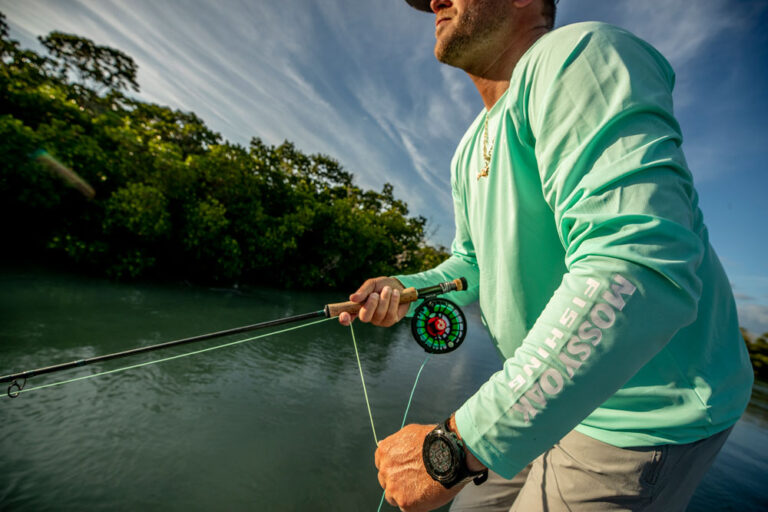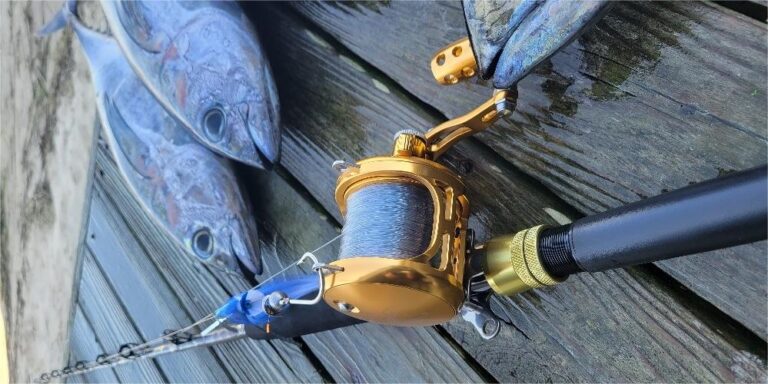To become a fishing tackle dealer, you need to follow specific steps such as researching the industry, obtaining necessary licenses, setting up a retail location or online store, and establishing relationships with suppliers and manufacturers. This comprehensive guide will help you navigate the process and become a successful fishing tackle dealer.
Whether you are an experienced angler looking to turn your passion into a business or an aspiring entrepreneur interested in the fishing industry, this article will provide you with the essential information you need to get started. So, let’s dive in and explore how you can become a fishing tackle dealer.

Credit: www.anker.com
Understanding The Fishing Tackle Industry
Overview Of The Fishing Tackle Industry
The fishing tackle industry is a thriving market that caters to anglers of all skill levels and interests. With the increasing popularity of fishing as a recreational activity, the demand for fishing tackle has skyrocketed. Here are the key points to understand about this industry:
- The fishing tackle industry consists of manufacturers, wholesalers, retailers, and distributors who specialize in producing and selling fishing equipment and gear.
- It encompasses a wide range of products such as fishing rods, reels, lines, lures, hooks, and other accessories.
- The industry serves both the recreational and professional fishing markets, providing options for casual fishermen as well as tournament anglers.
- Fishing tackle companies often emphasize innovation and technological advancements to create products that enhance the fishing experience.
- The industry is highly competitive, with many established brands and new players continuously entering the market.
Growth Potential And Market Trends
As the popularity of fishing continues to grow, the fishing tackle industry offers promising growth potential. Understanding the latest market trends can help fishing tackle dealers make informed decisions regarding their business strategies. Here are the key points to consider:
- The global fishing equipment market is expected to reach a market value of usd 24.2 billion by 2025, driven by increased global fishing activities and rising disposable incomes.
- The e-commerce trend has significantly impacted the fishing tackle industry, allowing consumers to conveniently purchase fishing equipment online.
- Sustainable and eco-friendly fishing tackle products have gained popularity among environmentally conscious anglers, presenting an opportunity for dealers to cater to this growing market segment.
- Technological advancements, such as smart fishing gear and digital fishing apps, are emerging trends that provide new opportunities for innovation and product development.
Identifying The Target Market
Identifying the target market is crucial for fishing tackle dealers to tailor their product offerings and marketing strategies. Here are the key points to consider when defining your target market:
- Research the demographics and preferences of your potential customers. Consider factors such as age, gender, location, fishing style, and skill level.
- Understand the specific needs and pain points of your target market. This can be done through customer surveys, market research, and analyzing customer feedback.
- Consider the different segments within the fishing market, such as freshwater fishing, saltwater fishing, fly fishing, and ice fishing. Each segment may have specific product preferences and requirements.
- Utilize social media platforms and online forums to engage with your target market and gain insights into their preferences and buying behaviors.
- Keep a close eye on competitors and their target markets. Differentiate your business by offering unique products or targeting underserved market segments.
Understanding the fishing tackle industry, its growth potential, market trends, and target market is essential for anyone aspiring to become a fishing tackle dealer. By staying informed and adapting to the evolving needs of anglers, you can position your business for success in this lucrative industry.
Steps To Becoming A Fishing Tackle Dealer
If you have a passion for fishing and a desire to turn it into a profitable business, becoming a fishing tackle dealer might be the perfect venture for you. Selling fishing tackle and equipment can be rewarding both personally and financially.
However, before you dive into this exciting endeavor, there are several important steps you need to follow. Let’s explore these steps in detail:
Research And Planning
Before embarking on your journey as a fishing tackle dealer, it’s crucial to conduct thorough research and create a well-thought-out plan. This will help you understand the market and devise strategies to succeed. Consider the following:
- Identify your target market and their needs.
- Analyze the demand for fishing tackle in your area.
- Research the local competition and identify gaps in the market.
- Determine your niche and unique selling points.
Market Analysis And Competitor Research
To succeed in the fishing tackle industry, you must have a solid understanding of the market dynamics and your competitors. Consider the following:
- Analyze the market trends and customer preferences.
- Identify your competitors and analyze their strengths and weaknesses.
- Determine the pricing strategies and product assortments of your competitors.
- Look for opportunities to differentiate your business from competitors.
Creating A Business Plan
A well-crafted business plan is essential for any successful venture. It outlines your goals, strategies, and financial projections. Consider the following:
- Define your business objectives and mission statement.
- Determine your pricing strategy and profit margins.
- Outline your marketing and sales strategies.
- Create a detailed financial plan including start-up costs, operational expenses, and expected revenue.
Setting Financial Goals And Budgeting
Managing your finances effectively is crucial for the success of your fishing tackle business. Consider the following:
- Set clear financial goals for your business.
- Create a budget that covers all expenses including inventory, rent, utilities, and marketing.
- Monitor your financial performance regularly and make adjustments as needed.
Legal Requirements And Regulations
Complying with legal requirements and regulations is vital for the smooth operation of your fishing tackle business. Consider the following:
- Research and understand the local, state, and federal regulations related to fishing tackle sales.
- Obtain any necessary permits or licenses required to operate your business legally.
- Familiarize yourself with fishing and wildlife regulations in your area.
Registering Your Business
To establish your fishing tackle business as a legal entity, you need to register it with the appropriate authorities. Consider the following:
- Decide on the legal structure of your business (sole proprietorship, partnership, llc, etc. ).
- Register your business name with the appropriate government agency.
- Obtain a tax identification number from the irs, if required.
- Consult with a legal professional to ensure compliance with all legal requirements.
Obtaining Necessary Licenses And Permits
To operate your fishing tackle business legally, you may need to obtain specific licenses and permits. Consider the following:
- Research the licenses and permits required for selling fishing tackle in your area.
- Complete the necessary applications and provide any required documentation.
- Pay the applicable fees.
Complying With Fishing And Wildlife Regulations
As a fishing tackle dealer, it’s important to understand and comply with fishing and wildlife regulations. Consider the following:
- Stay updated on fishing seasons and catch limits for various species.
- Educate your customers on regulations and best practices for responsible fishing.
Building Relationships With Suppliers
Establishing strong relationships with reliable suppliers is key to ensuring a consistent supply of quality fishing tackle. Consider the following:
- Research and identify reputable fishing tackle manufacturers.
- Reach out to potential suppliers and request product catalogs or samples.
- Establish open lines of communication with suppliers.
- Negotiate favorable terms, prices, and shipping arrangements.
Setting Up Your Fishing Tackle Shop
Creating an inviting and organized store layout is crucial for attracting customers and maximizing sales. Consider the following:
- Choose an ideal location with high visibility and easy access.
- Design a store layout that optimizes product display and customer flow.
- Stock your inventory effectively, considering customer preferences and popular fishing techniques.
Marketing And Promoting Your Business
To attract customers to your fishing tackle business, you need to implement effective marketing strategies. Consider the following:
- Develop a compelling brand identity that aligns with your target market.
- Create an online presence with a website and social media accounts.
- Implement marketing strategies such as search engine optimization, content marketing, and email campaigns.
- Offer exceptional customer service to build loyalty and generate positive word-of-mouth.
Providing Exceptional Customer Service
Delivering a superior customer experience is crucial for building customer loyalty and generating repeat business. Consider the following:
- Train your staff to be knowledgeable and passionate about fishing tackle.
- Provide personalized recommendations and advice to customers.
- Handle customer complaints and feedback promptly and professionally.
Managing Inventory And Finances
Efficiently managing your inventory and finances is essential for the overall success of your fishing tackle business. Consider the following:
- Establish an inventory management system to track stock levels and reorder as needed.
- Monitor sales and inventory turnover to identify popular products and slow-moving items.
- Manage cash flow and profitability by tracking expenses and revenue.
Expanding Your Business
As your fishing tackle business grows, you may consider expanding to reach more customers and increase revenue. Consider the following:
- Diversify your product offerings to cater to a wider customer base.
- Explore online selling platforms to reach customers beyond your local area.
- Consider opening additional store locations if market demand and resources allow.
By following these steps, you’ll be well on your way to becoming a successful fishing tackle dealer. Remember to continuously adapt and evolve your strategies to stay ahead in this competitive industry. Happy fishing and happy selling!
Conclusion
Becoming a fishing tackle dealer comes with its challenges, but with the right knowledge, skills, determination, and a solid business plan, you can succeed in this industry. Start by understanding the market demand and identifying your target audience. Conduct thorough research to source high-quality products that are popular among anglers.
Establish a strong online presence through a user-friendly website and social media platforms. Utilize seo strategies to optimize your website’s visibility and attract organic traffic. Engage with your audience through informative and engaging content, helpful tips, and regular updates. Collaborate with influential anglers or fishing communities to create brand awareness and build credibility.
Finally, provide exceptional customer service and offer competitive prices to attract and retain loyal customers. By following these steps, you can start your journey to become a successful fishing tackle dealer.






